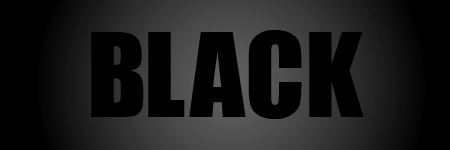rgb-black-color-web
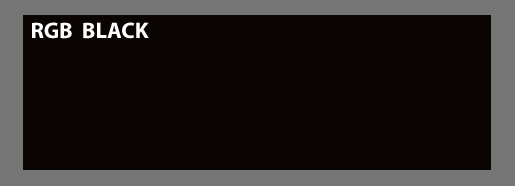
RGB Black | R/0 G/0 B/0 : This black represents zero RGB light―and therefore ‘black’. For more information on the properties of the RGB additive color model, visit this WikiPedia Article.
When to use: For all on-screen, web and online PDF use. Variations are sometimes used (for example R/5 G/5 B/5), but differing end-user screens makes this practice futile unless a major shift of color is required; and therefore, the color black would be subjective.
photoshop-black-100
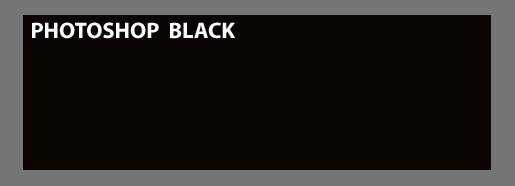
PhotoShop® Black | C86 M85 Y79 K100 : This type of black is roughly comprised by the preceding color combination, but can vary slightly between document profiles and PS version number (some versions produce black at around (90%).
When to use: This is the default PhotoShop® Black. The total ink coverage exceeds the TIC limit of 260-320% (depending on paper stock and printing process), although the total ink coverage can be automatically amended with GCR (Grey Component Replacement) and UCR (Under Color Removal) at the printers.
neutral-rich-black
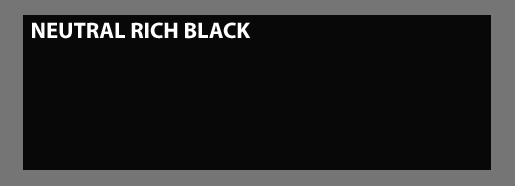
Neutral Rich Black (also known as Rich Black) | C40 M30 Y30 K100 : This type of black is roughly comprised by the preceding color combination, but varies between designers’ personal preference.
When to use: There are plenty of variants in this colour mix. This is a very general, rich black that doesn’t exceed a 200% TAC (Total Ink Coverage) limit.
registration-black-color
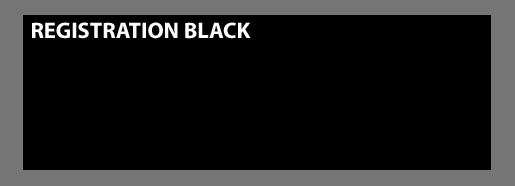
Registration Black | C100 M100 Y100 K100 : This mix is comprised of the maximum amount of cyan, magenta, yellow and black.
When to use: Generally, this color is only to be used for registration marks on documents to be sent to the printers. The only exception to this is if a file containing registration black is to be digitally printed (at home or professionally) as toner is used, not wet-ink.
flat-black-color
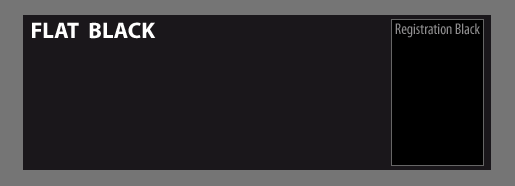
Flat Black | C0 M0 Y0 K100 : This black is just made up of 100% of the black channel, with no other ink in the mix. Also known as Standard black.
When to use: Looking very ‘washed-out’, this black is best used just for small text in magazines and books, and in particular, newsprint where TAC limits are are set to very low tolerance’s.
designer-black-image
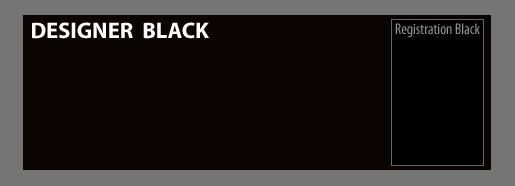
Designer Black | C70 M50 Y30 K100 : This black is just made up to a TAC equating to 250%
When to use: Probably the most commonly type of black used. Many designers have their favourite mix―and for different papers and printers. This is a very general, rich and punchy black that will suit almost any application.
pantone-process-black
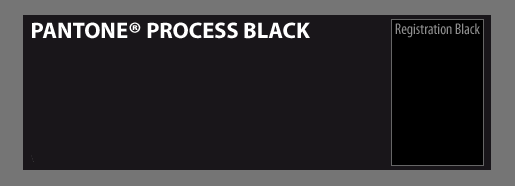
Pantone® Process Black | Spot-Color/’K100′ : This black is available as Pantone® Process Black C (coated), U, (Uncoated) and M (Matt).
When to use: Being one of the ‘four CMYK colors‘, this black is ideally suited to printing text, whereby correct registration is not an issue.
cool-black-cmyk
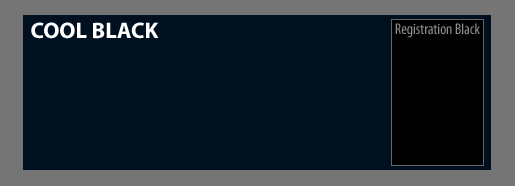
Cool Black (also known as Black Bump) | C50 M0 Y0 K100 : This is the general-mix, but this black can also be comprised [typically] of between 20%-80% cyan.
When to use: Normally, this type of black is used when a very cold-feeling shine/glaze is required. For example, it would be appropriate on posters containing large areas of black, whereby the purpose is to advise elderly people on an impending flu-epidemic. The bluish-tone would add an almost-subliminal dimension to the design.
golden-black-color
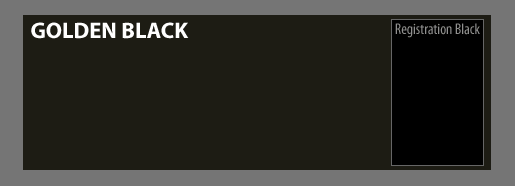
Golden Black | C0 M0 Y60 K100 : This is the general-mix, but this black can also be comprised [typically] of between 20%-80% yellow.
When to use: Normally, this type of black can be used when a very warm/earthy feeling shine/glaze is required in a design. For example, this could be used on a ‘Global Warming’ advertisement, etc.
warm-black-color
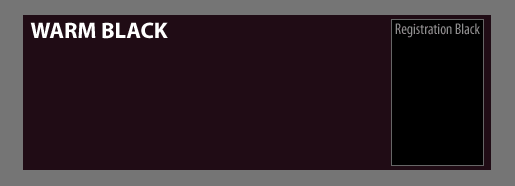
Warm Black | C0 M60 Y0 K100 : This is the general-mix, but this black can also be comprised [typically] of between 20%-80% magenta.
When to use: This type of color would be great if used on a brochure for a jewellery company, etc.
pantone-black-image
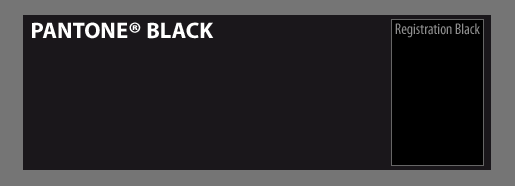
Pantone® Black | Spot-Color : This black is available as Pantone® Black C (coated), U, (Uncoated) and M (Matt).
When to use: Ideally, this is used for example, on business cards and letterheads, whereby only a certain amount of spot colors are used instead of the expense of CMYK. Another great use is in Duo-tone images.
pantone-hexachrome-black
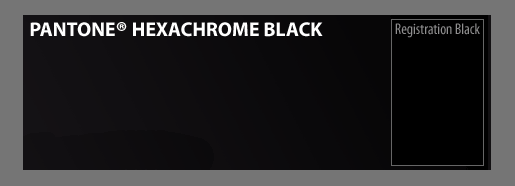
Pantone® Hexachrome® Black | Part of the CMYKOG process range (cyan, magenta, yellow, black, orange & green), : This black is available as Pantone® Black C (coated), U, (Uncoated) and M (Matt).
When to use: It would be pretty pointless using this black on its own, as it has been developed to be used within the Hexachrome® color range (a set of six colors that produce vivid, bright prints).
pantone-2-3-4-5-6-7-black
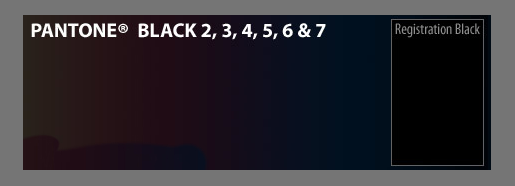
Pantone® Black 2, 3, 4, 5, 6 & 7 (range) | Spot-Colors : These blacks are available as Pantone® Black C (coated), U, (Uncoated) and M (Matt).
When to use: This range of blacks really start to depart from the standard perception of a ‘standard black’. The color-tints in the range are quite prominent, mimicking in many ways cool, rich and ruby black, etc, but in a single spot-color. Use instead of a similar CMKY black to save money or printing costs.
metal-fx-black
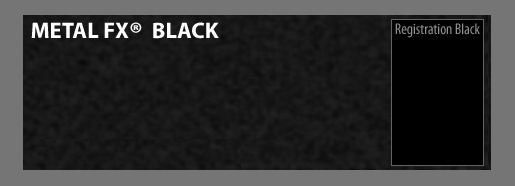
Metal FX® Black | [Specialty] Spot-Color : This black is part of a set of metallic-colors that are special color inks printed onto a pre-printed metallic base.
When to use: If you want a very eye-catching design―and have a larger printing budget (printing costs are often about +40% of typical CMYK), the Metal FX® printing process may be a great option, but complicated file setups are required―and printers offering this option are few and far between.
trumatch-toyo-ficaltone
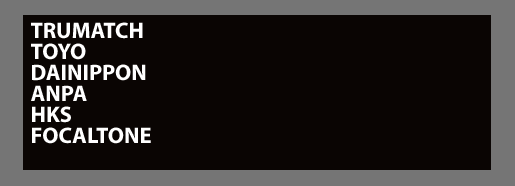
Trumatch® Black | Based on the CMYK color-space. Available in Coated and Uncoated swatchbooks.
When to use: If you want more accurate matching of spot colors when converting to CMYK, Trumatch® may be more appropriate than Pantone® colors. However, in the case of just utilizing black, there is little valid reason to use beyond a consistent color work-flow. Read this article for more information.
Written by Andrew Kelsall
